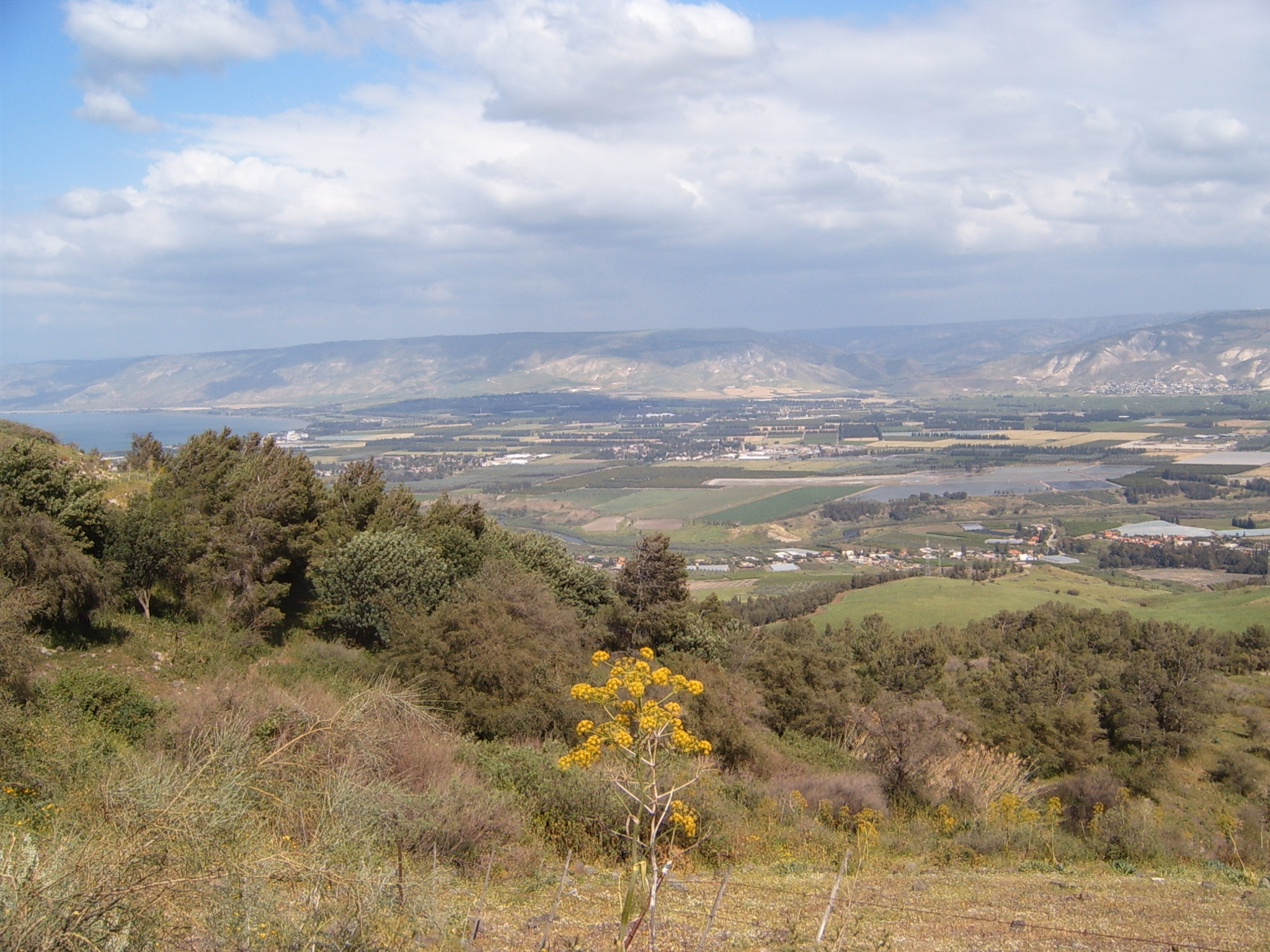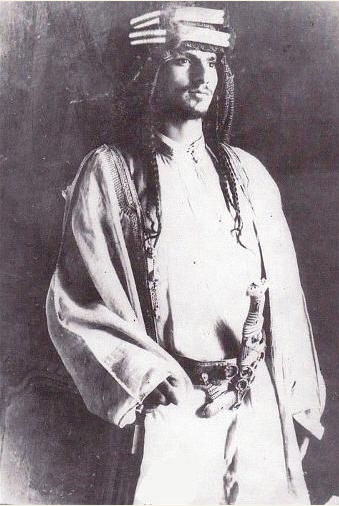|
Bani Sakhr
The Beni Sakhar confederacy is one of the largest and most influential tribal confederacies in Jordan. The Bani Sakher began migrating to Jordan as early as the 16th century and grew to become an influential tribe as by around the mid 18th century. According to the 1986 Jordanian Electoral Law, the Bani Sakher tribe is made up of fourteen clans: Al-Fayez; AL-Jahawsheh; Al-Khirshan; Al-Jbour; Al-Salim; Al-Badareen; Al-Gudah; Al-Hammad; Al-Shra'ah and Al-Zaben (traditionally known collectively as the Ka'abnah half of the Bani Sakher); Al-Ghbein; Al-Amir; Al-Ka'abna; Al-Hgeish; Al-Saleet, and Al-Taybeen (traditionally known collectively as the Twaga half of the Bani Sakher). History Origin The Bani Sakher was a tribe title that was given to more than one tribe, but the greatest and most famous of this tribes are the sons of Sakher Al-Ta’yun from Bani Tayy, who refer to their lineage to an offense of the famous Qahtaniya tribe; specifically the Kahlani sub-group. The Tayys lived in ... [...More Info...] [...Related Items...] OR: [Wikipedia] [Google] [Baidu] |
Sheikh Hadeetha Al-Khraisha Of The Bani Sakhr Tribe
Sheikh (pronounced or ; ar, شيخ ' , mostly pronounced , plural ' )—also transliterated sheekh, sheyikh, shaykh, shayk, shekh, shaik and Shaikh, shak—is an honorific title in the Arabic language. It commonly designates a chief of a tribe or a royal family member in Arabian countries, in some countries it is also given to those of great knowledge in religious affairs as a surname by a prestige religious leader from a chain of Sufi scholars. It is also commonly used to refer to a Muslim religious scholar. It is also used as an honorary title by people claiming to be descended from Hasan ibn Ali and Husayn ibn Ali both patrilineal and matrilineal who are grandsons of the Islamic prophet Muhammad. The term is literally translated to " Elder" (is also translated to "Lord/Master" in a monarchical context). The word 'sheikh' is mentioned in the 23rd verse of Surah Al-Qasas in the Quran. Etymology and meaning The word in Arabic stems from a triliteral root connected with a ... [...More Info...] [...Related Items...] OR: [Wikipedia] [Google] [Baidu] |
Jordan Valley (Middle East)
The Jordan Valley ( ar, غور الأردن, ''Ghor al-Urdun''; he, עֵמֶק הַיַרְדֵּן, ''Emek HaYarden'') forms part of the larger Jordan Rift Valley. Unlike most other river valleys, the term "Jordan Valley" often applies just to the lower course of the Jordan River, from the spot where it exits the Sea of Galilee in the north, to the end of its course where it flows into the Dead Sea in the south. In a wider sense, the term may also cover the Dead Sea basin and the Arabah valley, which is the rift valley segment beyond the Dead Sea and ending at Aqaba/Eilat, farther south. The valley, in the common, narrow sense, is a long and narrow trough, long if measured " as the crow flies", with a width averaging with some points narrowing to over most of the course, before widening out to a delta when reaching the Dead Sea. Due to meandering, the length of the river itself is . This is the valley with the lowest elevation in the world, beginning at below sea level ... [...More Info...] [...Related Items...] OR: [Wikipedia] [Google] [Baidu] |
Palestine Exploration Fund
The Palestine Exploration Fund is a British society based in London. It was founded in 1865, shortly after the completion of the Ordnance Survey of Jerusalem, and is the oldest known organization in the world created specifically for the study of the Levant region, also known as Palestine. Often simply known as the PEF, its initial objective was to carry out surveys of the topography and ethnography of Ottoman Palestine – producing the PEF Survey of Palestine – with a remit that fell somewhere between an expeditionary survey and military intelligence gathering. It had a complex relationship with Corps of Royal Engineers, and its members sent back reports on the need to salvage and modernise the region.Ilan Pappé (2004) A history of modern Palestine: one land, two peoples Cambridge University Press, pp 34-35 History Following the completion of the Ordnance Survey of Jerusalem, the Biblical archaeologists and clergymen who supported the survey financed the creation of t ... [...More Info...] [...Related Items...] OR: [Wikipedia] [Google] [Baidu] |
Haditha Al-Khraisha
Haditha Ali Abdullah Al-Khraisha ( ar, حديثه علي عبد الله حميدي خلف سالم حنيف محمد (سليم العود) محمد سليمان حنيف الخريشه ) was a Bedouin tribal sheikh in Jordan in the nineteenth and twentieth-centuries. Haditha was one of the two paramount sheikhs of the Bani Sakhr Tribe, arguably the most powerful tribe in Jordan. Haditha headed the northern clans of the Bani Sakher (al-Ka'abnah), while Mithgal Al-Fayez headed the other half, (al-Twaga). In the early twentieth century (1922 & 1924), Haditha and the Bani Sakhr, in addition to other Trans-Jordanian tribes such as the Huweitat and the Belqawiah, fought the Wahhabi Ikhwan, a religious militia who helped establish Abdul Aziz Ibn Saud as the first King of Saudi Arabia. The Wahhabi Ikhwan were Abdul Aziz Ibn Saud's tool for territorial expansion and lent religious legitimacy to Ibn Saud's territorial and political ambitions. According to King Faisal Al Saud the armed r ... [...More Info...] [...Related Items...] OR: [Wikipedia] [Google] [Baidu] |
Shammar
The tribe of Shammar ( ar, شَمَّر, Šammar) is a tribal Arab Qahtan confederation, descended from the Yemeni tribe of Tayy as they originated in Yemen before migrating into present day Saudi Arabia, It is the biggest branch of Tayy tribe. It is one of the largest and most influential Arab tribes. The historical and traditional seat of the tribe's leadership is in the city of Ha'il in what was the Emirate of Jabal Shammar in Saudi Arabia. In its "golden age", around 1850, the tribe ruled much of central and northern Arabia from Riyadh to the frontiers of Syria and the vast area known as Al Jazira in Northern Iraq. One of the early famous figures from the tribe was the legendary Hatim Al-Ta'i (Hatim of Tayy; died 578), a Christian Arab renowned for generosity and hospitality who figured in the '' Arabian Nights''. The early Islamic historical sources report that his son, Adiyy ibn Hatim, whom they sometimes refer to as the "king" of Tayy, converted to Islam before Muhammad's ... [...More Info...] [...Related Items...] OR: [Wikipedia] [Google] [Baidu] |
Nejd
Najd ( ar, نَجْدٌ, ), or the Nejd, forms the geographic center of Saudi Arabia, accounting for about a third of the country's modern population and, since the Emirate of Diriyah, acting as the base for all unification campaigns by the House of Saud to bring Arabia under a single polity and under the Salafi jurisprudence. Historic Najd was divided into three modern administrative regions still in use today. The Riyadh region, featuring Wadi Hanifa and the Tuwaiq escarpment, which houses easterly Yamama with the Saudi capital, Riyadh since 1824, and the Sudairi region, which has its capital in Majmaah. The second administrative unit, Al-Qassim, houses the fertile oases and date palm orchards spread out in the region's highlands along Wadi Rummah in central Najd with its capital in Buraidah, the second largest Najdi city, with the region historically contested by the House of Rashid to its north and the House of Saud to its east and south. The third administrative un ... [...More Info...] [...Related Items...] OR: [Wikipedia] [Google] [Baidu] |
Ibn Saud
Abdulaziz bin Abdul Rahman Al Saud ( ar, عبد العزيز بن عبد الرحمن آل سعود, ʿAbd al ʿAzīz bin ʿAbd ar Raḥman Āl Suʿūd; 15 January 1875Ibn Saud's birth year has been a source of debate. It is generally accepted as 1875, although a few sources give it as 1880. According to British author Robert Lacey's book ''The Kingdom'', a leading Saudi historian found records that show Ibn Saud in 1891 greeting an important tribal delegation. The historian reasoned that a 10 or 11-year-old child (as given by the 1880 birth date) would have been too young to be allowed to greet such a delegation, while an adolescent of 15 or 16 (as given by the 1875 date) would likely have been allowed. When Lacey interviewed one of Ibn Saud's sons prior to writing the book, the son recalled that his father often laughed at records showing his birth date to be 1880. Ibn Saud's response to such records was reportedly that "I swallowed four years of my life." p. 561" – 9 Novembe ... [...More Info...] [...Related Items...] OR: [Wikipedia] [Google] [Baidu] |
Rashidi Dynasty
The Rasheed dynasty, also called Al Rasheed or the House of Rasheed ( ar, آل رشيد ; ), was a historic Arabian House or dynasty that existed in the Arabian Peninsula between 1836 and 1921. Its members were rulers of the Emirate of Ha'il and the most formidable enemies of the House of Saud, rulers of the Emirate of Nejd. They were centered in Ha'il, a city in northern Najd that derived its wealth from being on the route of the Hajj pilgrimage to Mecca, and was also a commercial center. The rulers of Ha'il were the sons of Abdullah bin Rashid, founder of the dynasty. History The Rashidi dynasty derived their name from their forebear Abdullah bin Ali Al Rashid, the first emir, who began the establishment of the Emirate of Ha'il. The Rashidi emirs co-operated closely with the Ottoman Empire. However, that co-operation became problematic as the Ottoman Empire lost popularity. In 1890, Al Rashid occupied Riyadh and then defeated the Saudi tribes, who fled into exile, first t ... [...More Info...] [...Related Items...] OR: [Wikipedia] [Google] [Baidu] |
Ottoman Empire
The Ottoman Empire, * ; is an archaic version. The definite article forms and were synonymous * and el, Оθωμανική Αυτοκρατορία, Othōmanikē Avtokratoria, label=none * info page on book at Martin Luther University) // CITED: p. 36 (PDF p. 38/338) also known as the Turkish Empire, was an empire that controlled much of Southeast Europe, Western Asia, and Northern Africa between the 14th and early 20th centuries. It was founded at the end of the 13th century in northwestern Anatolia in the town of Söğüt (modern-day Bilecik Province) by the Turkoman tribal leader Osman I. After 1354, the Ottomans crossed into Europe and, with the conquest of the Balkans, the Ottoman beylik was transformed into a transcontinental empire. The Ottomans ended the Byzantine Empire with the conquest of Constantinople in 1453 by Mehmed the Conqueror. Under the reign of Suleiman the Magnificent, the Ottoman Empire marked the peak of its power and prosperity, as well a ... [...More Info...] [...Related Items...] OR: [Wikipedia] [Google] [Baidu] |
Camel A camel (from: la, camelus and grc-gre, κάμηλος (''kamēlos'') from Hebrew or Phoenician: גָמָל ''gāmāl''.) is an even-toed ungulate in the genus ''Camelus'' that bears distinctive fatty deposits known as "humps" on its back. Camels have long been domesticated and, as livestock, they provide food (milk and meat) and textiles (fiber and felt from hair). Camels are working animals especially suited to their desert habitat and are a vital means of transport for passengers and cargo. There are three surviving species of camel. The one-humped dromedary makes up 94% of the world's camel population, and the two-humped Bactrian camel makes up 6%. The Wild Bactrian camel is a separate species and is now critically endangered. The word ''camel'' is also used informally in a wider sense, where the more correct term is "camelid", to include all seven species of the family Camelidae: the true camels (the above three species), along with the "New World" camelids: the llama, ... [...More Info...] [...Related Items...] OR: [Wikipedia] [Google] [Baidu] |






